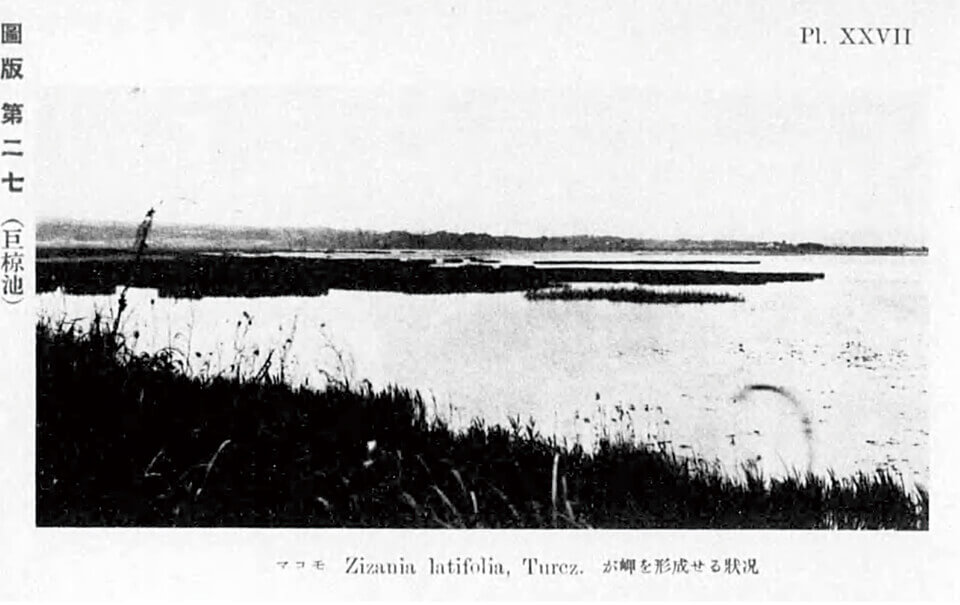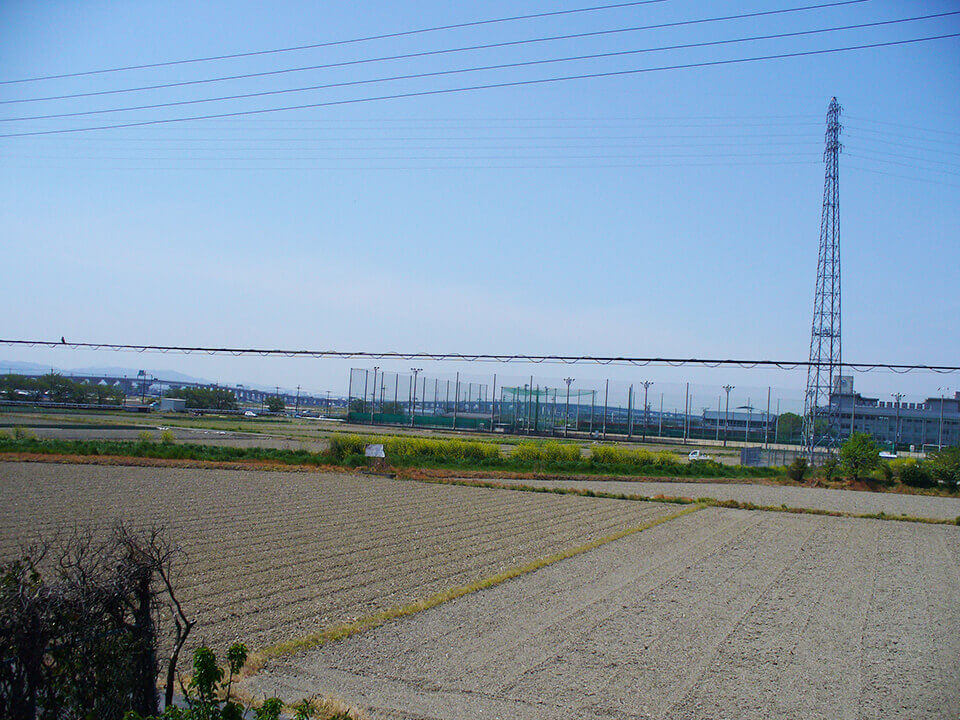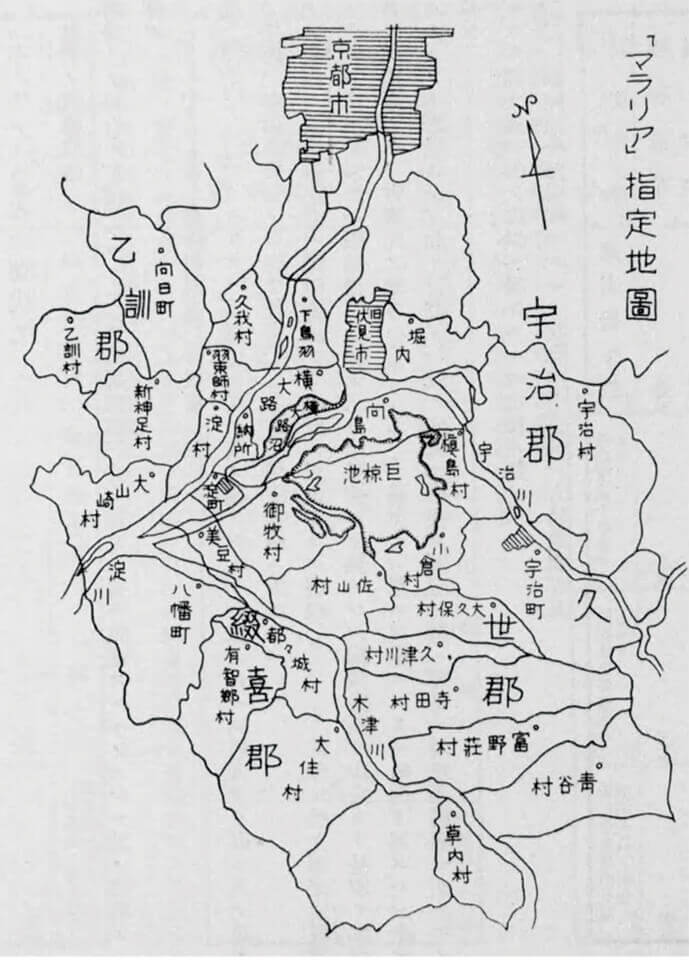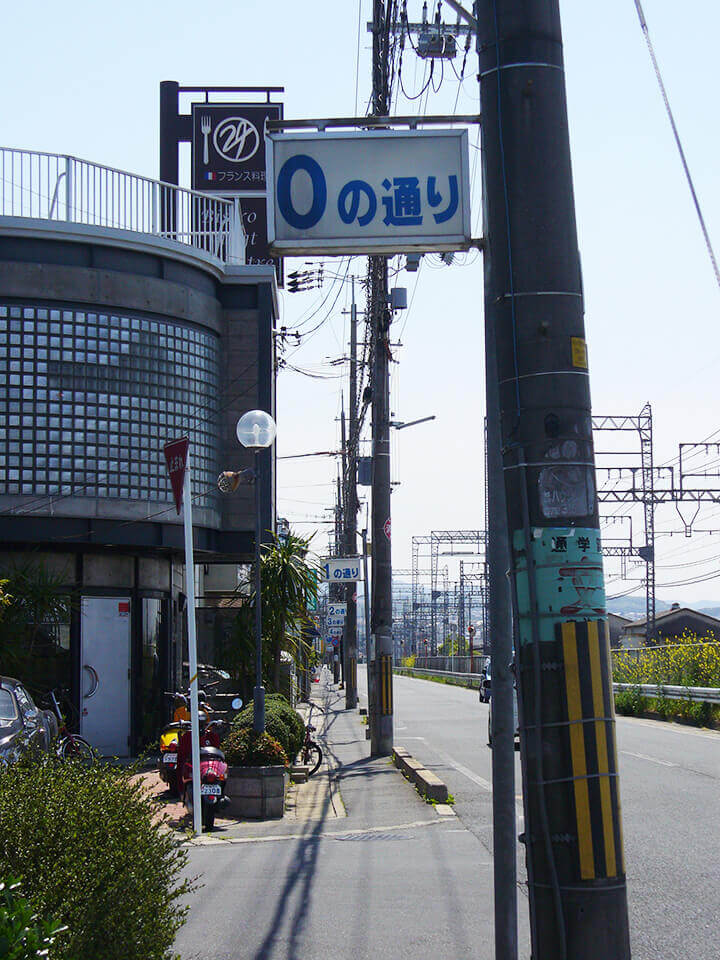
Once upon a time in Kyoto,Ogura Pond is a huge pond that can fit about half of the city area.I heard that very few people know that it happened.
The pond was located in the south of Kyoto, in an area where three major rivers, the Uji River, the Kizugawa River, and the Katsura River, converge. It is said to have a circumference of approximately 16 km and an area of approximately 800 hectares. It is a remnant of the old Lake Yamashiro that existed in ancient times, and was a scenic spot that was famous for the Manyoshu poem in which Kakimoto Hitomaro wrote, ``As soon as Ogura no Irie echoes, Fushimi, the archer, flies wild geese to Taii.'' It has also been known as a famous place for lotus viewing since the early Showa era.``Hasumi no Fune'' was released and became a summer tradition.It became.

Ogura Pond
"Report of the Kyoto Prefecture Historical Sites Research Committee. Volume 8" (Showa 2)
(Reprinted from the National Diet Library website)
In addition, when Emperor Kanmu moved the capital to Heiankyo, Ogura Pond was said to correspond to the Suzaku of the four gods of Onmyodo (Seiryu in the east, Byakko in the west, Suzaku in the south, and Genbu in the north).protect the south of the capitalIt has fulfilled its role. Ogura Pond also changed shape with the times,It disappeared from the map due to the national reclamation project that began in 1930.Today, Mukojima New Town, factories, and rice fields are located on the site.

In the past, from Mukojima Station, located inside Ogura Pond,
View of the current Ogura Pond reclaimed land
By the way, Ogura Pond has a strange legend that contradicts its scenic image and its role as a Suzaku. This is the story of ``Jinmenso'' in the ghost story collection ``Togiboko,'' published in the early Edo period.
A long time ago, a man who was farming in Ogura was repeatedly attacked by high fever and severe chills. His condition worsened, and a lump formed on his left thigh, causing pain. Gradually, the creature grew larger and finally began to resemble a human's face. As a test, the man poured sake into the creature's mouth, and he gulped it down.When he gave him some food, he gulped it down. The pain only disappeared when Dekimono put something in his mouth. It hurt and it was creepy, so I went to various doctors, but nothing could be done.
A monk who was on a pilgrimage to various countries came across the temple and fed it all sorts of things. Then, he never tried to eat the shellfish. So the monk ground the shellfish into powder, stuffed it into a reed tube, screwed it into the mouth of the creature, and continued to blow into it. As a result, a scab appeared on the creature, and it was completely cured.
The shellfish used in this treatment is a plant belonging to the lily family, and is apparently also used as a Chinese herbal medicine. Even so,Why did such a creepy legend arise in this area?A clue was hidden in one of the reasons why this huge pond disappeared.
In fact, the Ogura Pond reclamation project was said to be aimed at preventing the endemic disease ``okori'' caused by water pollution and damage from repeated floods. Okoli is a malaria-like disease that causes repeated fever and chills. Ogura Pond, which had been a dead lake in the early Showa period, became a source of mosquitoes and malaria outbreaks occurred around the pond, and 19 coastal towns and villages have been designated as malaria-infectious areas.The locals called it Okori and feared it.However, the symptoms are similar to those of the man with ``human face acne''. Okoli have been occurring periodically around ponds since ancient times, which may have given rise to these ghost stories.

Malaria designated map
“Malaria prevention and eradication project results survey report” (Showa 11)
(Reprinted from the National Diet Library website)
Nowadays, the area around Ogura Pond has changed so much that it cannot be remembered as it once was. However, during the interview, I heard an interesting story from a person at a local museum.
This is because, although at first glance it appears that the pond has disappeared,In reality, there are checkerboard-like water channels and main drainage channels running criss-cross beneath the rice fields and residential areas, and the water from the ponds still irrigates the surrounding fields.That's what it means. Even now, if you raise the soil in a paddy field, lotus seeds will come out.
As you walk around the area, you can definitely see drainage ditches and hear the trickling sound of water. Suzaku and Ogura Pond in Heiankyo were not lost;I just changed my appearancewas! As long as the pond continues to live and people continue to live, it would not be surprising if new legends of Ogura Pond are born in the future.

An interesting street called "0 street".
Inside the old Ogura Pond
Tradition that exists everywhere in the city of Kyoto. It is not just a picture, it is secretly alive in this modern age and continues to coexist with people. The two of Office TO, who previously wrote a series of articles "Kyoto's Demon World Exploration" in the monthly magazine Leaf, explore the mysterious "different" world of Kyoto, which was created over 1200 years. I will unravel the story while actually visiting the place. .
 News
News Feature article
Feature article Featured event
Featured event